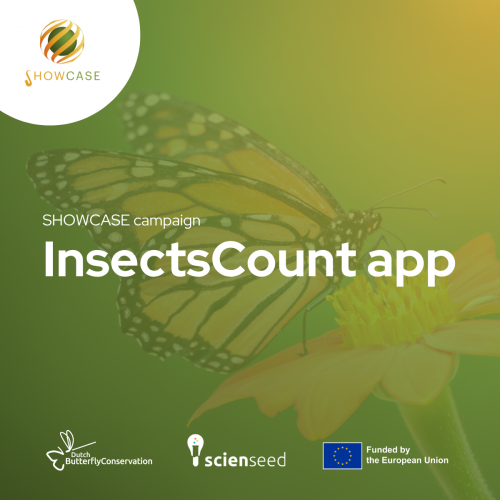SHOWCASE has just completed a multi-lingual campaign on X to promote InsectsCount, a new app for monitoring pollinators. Run in English, German, Spanish, French, Swedish and Dutch, the campaign aimed to engage farmers, environmental groups and citizen scientists across Europe in tracking vital insects like bees, butterflies and hoverflies. These pollinators are essential for plant reproduction and global food security, yet their populations are declining rapidly, threatening biodiversity and the sustainability of farming systems.
InsectsCount is a progressive web app that allows users to carry out short, standardised insect counts and compare their results with regional trends. The app stands out by emphasising collective, regional participation. Users join communities led by coordinators who define local observation goals, translate content and motivate engagement through news, challenges and gamified rewards such as badges. According to Michiel Wallis de Vries of the Dutch Butterfly Conservation, “as far as we know, this app is the first to combine pollinator monitoring and gamification.”
To participate, users join a regional group, register through a coordinator and begin recording insects visiting flowers. Farmers can use the data to improve biodiversity on their land, while researchers and NGOs can track trends and inform conservation. The app is free to use offline and available at insectscount.eu. For more information, contact: insectscount@vlinderstichting.nl.
This campaign plays a crucial role in raising awareness about the alarming decline of pollinators and the urgent need for action. By promoting the InsectsCount app across multiple languages and countries, SHOWCASE is helping to build a pan-European community of observers who contribute valuable data. This collective effort empowers both local and scientific communities to better understand pollinator trends, adapt farming practices and implement targeted conservation measures.
